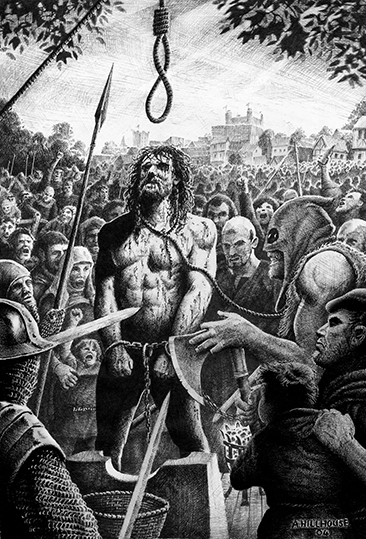
In August 1305, Wallace was captured at Robroyston, near Glasgow, and handed over to the English who tried him in Westminster Hall on the 23rd of August 1305 for treason and atrocities against English civilians in war, "sparing neither age nor sex, monk nor nun." He responded to the treason charge,
“I cannot be a traitor, for I owe him no allegiance. He is not my Sovereign; he never received my homage; and whilst life is in this persecuted body, he never shall receive it. To the other points whereof I am accused, I freely confess them all. As Governor of my country I have been an enemy to its enemies; I have slain the English; I have mortally opposed the English King; I have stormed and taken the towns and castles which he unjustly claimed as his own. If I or my soldiers have plundered or done injury to the houses or ministers of religion, I repent me of my sin; but it is not of Edward of England I shall ask pardon.”
Immediately after the show trial, which king Edward never even attended, Wallace was taken from the hall to the Tower of London, then stripped naked and dragged through the city at the heels of a horse to the Elms at Smithfield. He was then strangled by hanging, but cut loose while he was still alive, emasculated and eviscerated and his bowels burnt before him, beheaded, then cut into four parts. His head was placed on a pike on London Bridge and his limbs were displayed, separately, in Newcastle, Berwick, Stirling and Perth as a warning to others who may have rebelled. It did not have the desired effect! Since his death, Wallace has obtained an iconic status far beyond his homeland. A plaque stands in a wall of St. Bartholomew’s Hospital near the site of Wallace's execution at Smithfield.